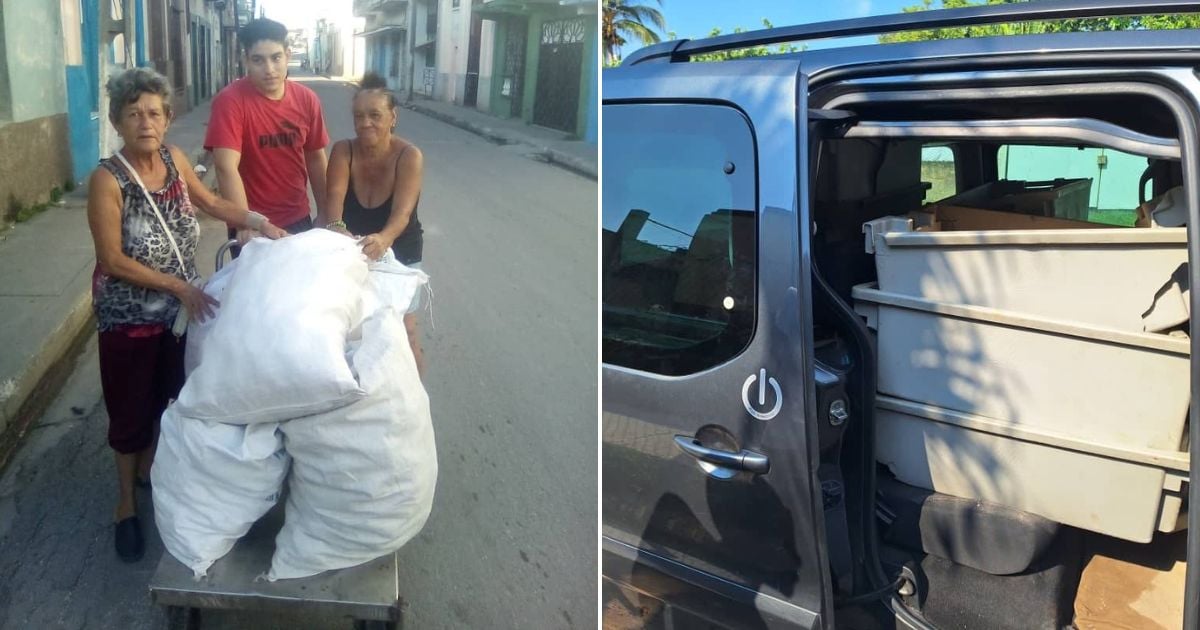The inability of the Cuban regime continues to produce images of the deep economic crisis affecting even the most basic services to the population. The government of Matanzas has been forced to use handcarts pushed by people and ETECSA's electric vehicles to distribute rationed bread, once again highlighting the struggle to guarantee even the most fundamental necessities.
Official journalist Yuni Moliner defended the Matanzas government's decision to use ETECSA's electric vehicles for bread transportation in a Facebook post on Saturday. "Given the current complexities with fuel, the collaboration between companies and timely measures are appreciated," Moliner stated, downplaying the reliance on improvised solutions to transport bread from the Provincial Food Company units to the bodegas.
Community Efforts Amid Transportation Crisis
The Versalles People's Council Facebook page in Matanzas showcased the use of a handcart as a solution to the evident bread transportation crisis in the province, moving the product from the bakery to the bodegas. "In light of transportation issues, community participation as an alternative is necessary," the profile indicated.
It noted that the delegate of District 9 of the Versalles People's Council, María Mercedes Ruiz Alonso, along with her constituents, are involved in this "task." "This is the attitude of the council delegates. At this moment, they are all immersed in solving each difficulty," the page boasted.
The Cuban regime announced last Friday that it would reduce the size of the bread in the basic food basket, which will now weigh only 60 grams. Anayra Cabrera Martínez, general director of industrial policy at the Ministry of Food Industry (MINAL), revealed that the low availability of wheat flour necessitates the reduction of the bread ration's weight from 80 grams to 60 grams. The price also decreased from one peso to 75 cents.
The directive explained that this is the only way to ensure the population can acquire bread daily and avoid disruptions like those experienced months ago. However, the measure has been heavily criticized on social media, with people showing that the bread, now laughably small, does not even reach the stipulated 60 grams.
For years, the regime has been unable to guarantee the quality and stability of the rationed bread distributed among the population. This is evident from the constant complaints circulating online, where people criticize the taste, texture, size, and consistency of such a crucial product as bread.
Challenges in Bread Distribution in Matanzas
This section addresses common questions and concerns about the recent developments in bread distribution in Matanzas and the broader implications of the economic crisis in Cuba.
Why is the Matanzas government using handcarts and ETECSA electric vehicles for bread distribution?
The government of Matanzas is using handcarts and ETECSA electric vehicles due to severe fuel shortages and a need to improvise solutions for distributing rationed bread amidst a deep economic crisis.
What has been the public reaction to the reduction in bread size?
The public has heavily criticized the reduction in bread size on social media, highlighting that the bread does not even reach the stipulated 60 grams and expressing dissatisfaction with the overall quality and consistency.
How is the community involved in addressing the bread distribution issues?
Community members, including the delegate of District 9 of the Versalles People's Council, María Mercedes Ruiz Alonso, are participating in using handcarts to transport bread from bakeries to bodegas as an alternative solution.
